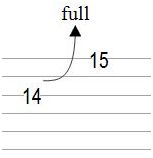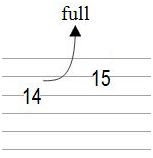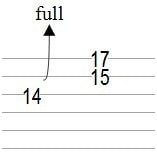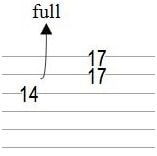By Tom Hess
Every great blues guitar player is able to play with a mean double stop technique (when two notes are played together at once during a solo). In most cases, guitarists use the notes of the blues or minor pentatonic scales. Check out the example below to see some double stop patterns that are frequently used in blues guitar.

On their own, these double stop licks sound interesting, however most guitarists are unable to creatively apply them into their playing because:
1. These types of double stops are very common and have been used countless times by blues guitar players. This makes your playing sound very unoriginal if you use them too many times.
2. Most guitar players equate using double stops with using one of the patterns above and never think of new ways to apply to apply them in a blues setting. Soon, you will learn just how many options you have for personal expression while using double stops (it’s a lot more than you think).
3. The unique intensity created by double stops is usually resolved as both notes in the lick are played in unison after the bend is finished. This takes away from the expressive potential of the technique to sound extremely intense and aggressive.
In a moment you will learn the main elements of a highly creative blues guitar double stop. Before reading this, check out the demonstration in the video below in order to get the greatest benefit from this article:
Intense Blues Guitar Double Stops Element #1: Using various notes of the scale
The most widely used blues double stops licks are played in a way that uses two notes to basically emphasize the same exact note (as shown in the video above). A more interesting way to use double stops is to use different notes in the scale you are playing. Listen to this in the examples below:
 |
 |
| Hear It | Hear It |
In the first example lick of the two from above, you can allow the B string to ring with the other two notes since it is in the same key. However, while playing a double stop in other keys, you will need to mute the B string using the fingers of your picking hand so that it does not create unwanted noise (making your lick sound sloppy/bad). Learn the best way to do this by reading this column on how to effectivelymute guitar string noise.
Creative Blues Guitar Double Stops Element #2: Extended musical tension
In general, blues double stop licks start with a tense feeling created when two notes a whole step apart sound simultaneously before the lower note is bent to match the pitch of the higher note (relieving the tension). In the video above, I did not follow this general approach – I did the opposite. I first playerd a normal note from the scale. Next, I played a note together with it that clashed and created a lot of musical tension. The tension created by this effect was never completely resolved (until I stopped playing). This is a very creative way to make your blues licks sound extremely intense.
Intense Blues Guitar Double Stops Element #3: Wide Vibrato
Most players think of using vibrato ‘only’ to emphasize single notes in their guitar phrases. By adding vibrato to both notes in your double stops, you will make the lick sound incredibly intense and creative. To hear the difference between these two approaches, listen to the example below. The first part of the audio doesn’t use vibrato, while the second emphasizes both notes using vibrato.

Notice: In order to apply balanced vibrato to each of the notes in the double stop lick, you need to have solid vibrato technique and/or use either a floating bridge or whammy bar. Keep your lick in tune and mute any strings that are not being played to prevent it from sounding sloppy. Learn how to keep your blues licks from becoming sloppy while playing with intensity by checking out this article about playing blues guitar.
Advanced Blues Guitar Technique: Using a barre to create more notes
To add an additional layer of depth to your intense double stop lick, use a barre to play more than two notes at once (as seen in the video above). An easy way to play this is to bend the note you are using on the G string and play 2 additional notes on the B and E strings. For instance:

You can use your third finger or small finger to barre the two notes on the B and E strings above.
Here are some additional examples of what this sounds like:
|
|
|
| Hear It | Hear It |
In order to apply vibrato to these advanced double stop licks, you will need to use a guitar with a floating bridge by pressing back and forth on the bridge with your picking hand (as seen in the video above). However, if you don’t own a guitar with a floating bridge, that is fine too. You can still implement the concepts discussed in this article to enhance your blues guitar playing.
To quickly get good at using the types of double stop licks in this article, practice them in isolation first before using them in your improvisation or lead guitar phrases. Then while you are soloing, use them to inject tons of intensity into your phrase.
After working on the ideas in this article for a while you will easily be able to apply blues guitar double stops into your phrases. But remember: knowing how to play cool blues guitar licks is just the beginning to becoming a great player. Discover how you can become a much better guitarist in all areas of your playing by studying this free guitar practice guide.
About The Author:
Tom Hess is a highly successful guitar teacher, songwriter and a pro guitarist. He uses the best online guitar lessons to train guitar players to reach their musical goals. Go to tomhess.net to get more guitar playing resources, guitar playing eBooks, and to read more guitar playing articles.
Tom Hess is our resident author, for other information including how to become an online guitar tutor go to http://www.internet-guitar-lessons.com/blues-guitar.html


